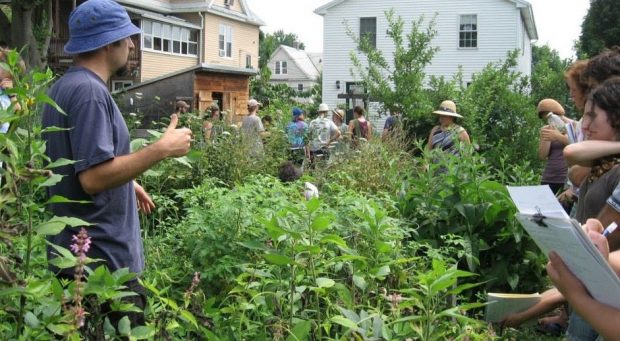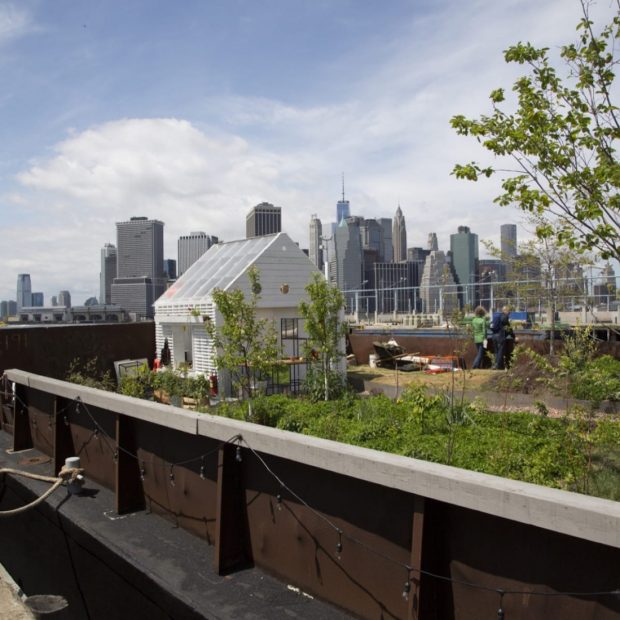
Green oases are springing up in cities all over the world, where everyone can plant their apple trees. It’s forbidden in New York of all places. An artist came up with an idea.
It’s everywhere. In the middle of the city. It is green, consists of fruit trees, vegetables, shrubs, and herbs. A so-called Food Forest: A public garden where everyone can plant their apple trees, grow tomatoes, and pick currants. Here is the silence of nature, while only a few meters away the metropolis pulsates.
In Berlin-Kreuzberg there is the Prinzessinnengarten, London oversees the Orchard Project, Los Angeles advertises the Fallen Fruits project. Public gardens have become indispensable in world metropolises. No wonder New York doesn’t want to be left out of the food forest trend.
READ: Don’t Get Cold: The Coolest Bar in New Yorks
With the Swale project, the artist Mary Mattingly wants to create a public kitchen garden in the metropolis. However, the city administration put a spanner in the works for the artist. A 19th-century law prevented the opening of a public garden.
In the regulations of the New York City Department of Parks and Recreation, Section 1-04 b. 4. shared public use of green spaces in connection with gardening and planting. This means that nobody is allowed to plant an apple tree, for example, in public spaces, and if such a tree is already in a park, the fruit may not be eaten. The law was originally drafted to protect the city’s gardens and parks from looters.
Nevertheless, Mary Mattingly does not want to be deterred from her project. If the law forbids cultivating a public kitchen garden on New York’s land, then it’s on the water. New York has enough of that. Mattingly wants to use the numerous waterways in and around the city and turn an old container ship into a green space. A floating garden that floats through the metropolis and moors here and there.
READ: Real New Yorkers: How Do They Live?

A team of landscape architects, engineers, students, artists, and educators spent a year preparing and planning to make the project a reality. It is funded primarily by the New York Foundation for the Arts and by voluntary donations from various organizations and individuals.
Speaking to news portal citylab.com, Mattingly said she hopes the project will convince the city and the law will be changed so more gardens can be opened within the city. Mattingly is supported by the artist Karla Stinger-Stein. This has been dealing with the subject of vegetation for some time. Together with some kindergartens, she is already raising the first seedlings for Swale.
Mattingly had the idea for Swale back in 2009. At that time, she lived with four other people for six months on a ship on the waterways of New York. With the Waterpod project, she wanted to prove that it is possible to live apart and independently from the global retail chain. Together with her partners, she grew food on the ship and only subsisted on what was produced on the ship. The sun provided electricity.
READ: The Best of 2021: Top 50 Articles about Dubai
Artist and permaculturist Casey Tang is also collaborating on Swale. He developed the plans for the barge on which the floating garden is to be opened and he also drew up the first extension plans. The bed is to be 29 by four meters in size. Watercress, peanuts, and blueberries are said to thrive there, as well as gooseberries and wild ginger.
New York’s first floating garden is was opened to the public. Swale should show how the food supply could work within a big city. A model of the city of the future.
Like us on Facebook for more stories like this: